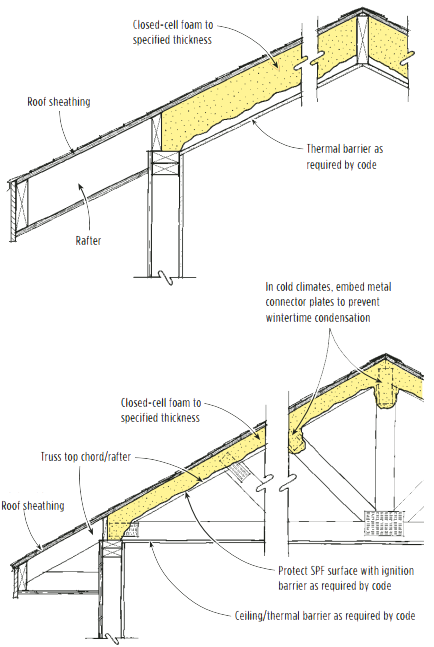Traditional attic ventilation was designed to remove excess moisture, but it’s not as effective as it can be. Latest research shows that this ventilation may be worse for house and may cause energy losses.
If the attic is vented, it often causes “chimney effect”. Because of ventilation and rising of warm air, moist air from basements is being pulled into the attic. Condensation to foam occurs because of cold air, which cools the roof in the nighttime. Attic ventilation also causes excessive temperatures in the daytime, as result of heating up the roof by radiant heat.
With Everest, all those problems can be easily solved. The solution is spray foam insulation, applied to underside of roof deck. Then, attic should be sealed off from its environment. This is a good decision for attics with “chimney effect”. In addition, spray foam insulation is also used as a thermal barrier, so it reduces heat transferring to the roof, and it can prevent ice damming in winter. It can deal with many house problems, which are connected with moisture.Stress load on ductwork and HVAC systems may be reduced with unvented attics. So, speaking about the results of the research, those attics are more efficient than attics with ventilation.
Stress load on ductwork and HVAC systems may be reduced with unvented attics. So, speaking about the results of the research, those attics are more efficient than attics with ventilation.


